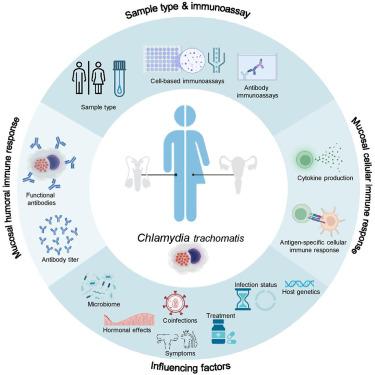Unveiling Chlamydia trachomatis immunity in urogenital secretions: A systematic review
IF 4.1
2区 综合性期刊
Q1 MULTIDISCIPLINARY SCIENCES
引用次数: 0
Abstract
Chlamydia trachomatis (CT) is a highly prevalent bacterial sexually transmitted infection (STI), associated with severe disease complications. CT targets a unique immunological environment: the genital tract epithelium. Although sampling the genital tract is challenging, previous studies have shown that genital CT-specific antibodies exhibit enhanced neutralizing capacity compared with serum antibodies. Furthermore, tissue-resident memory T (TRM) cells provide superior protection compared with circulating T cells. However, further research is required to identify correlates of protection and explore correlations between local and systemic responses. This review provides an overview of the sampling methods suitable for identifying mucosal immune biomarkers associated with CT infection, as well as the immunoassays used. We identified the microbiome, presence of coinfections, hormonal influences, genetics, and CT infection state, load, and genotype as confounding factors to be considered in trial design. Finally, we discuss challenges related to the detection of mucosal immune biomarkers and offer recommendations for future research.

揭示沙眼衣原体免疫在泌尿生殖系统分泌物:一个系统的回顾
沙眼衣原体(CT)是一种高度流行的细菌性传播感染(STI),与严重的疾病并发症相关。CT的目标是一个独特的免疫环境:生殖道上皮。尽管对生殖道取样具有挑战性,但先前的研究表明,与血清抗体相比,生殖器ct特异性抗体表现出增强的中和能力。此外,与循环T细胞相比,组织常驻记忆T细胞(TRM)提供了更好的保护。然而,需要进一步的研究来确定保护的相关性,并探索局部和全身反应之间的相关性。本文综述了适用于识别与CT感染相关的粘膜免疫生物标志物的采样方法,以及所使用的免疫测定方法。我们确定微生物组、合并感染的存在、激素影响、遗传学、CT感染状态、负荷和基因型是试验设计中需要考虑的混杂因素。最后,我们讨论了与粘膜免疫生物标志物检测相关的挑战,并对未来的研究提出了建议。
本文章由计算机程序翻译,如有差异,请以英文原文为准。
求助全文
约1分钟内获得全文
求助全文
来源期刊

iScience
Multidisciplinary-Multidisciplinary
CiteScore
7.20
自引率
1.70%
发文量
1972
审稿时长
6 weeks
期刊介绍:
Science has many big remaining questions. To address them, we will need to work collaboratively and across disciplines. The goal of iScience is to help fuel that type of interdisciplinary thinking. iScience is a new open-access journal from Cell Press that provides a platform for original research in the life, physical, and earth sciences. The primary criterion for publication in iScience is a significant contribution to a relevant field combined with robust results and underlying methodology. The advances appearing in iScience include both fundamental and applied investigations across this interdisciplinary range of topic areas. To support transparency in scientific investigation, we are happy to consider replication studies and papers that describe negative results.
We know you want your work to be published quickly and to be widely visible within your community and beyond. With the strong international reputation of Cell Press behind it, publication in iScience will help your work garner the attention and recognition it merits. Like all Cell Press journals, iScience prioritizes rapid publication. Our editorial team pays special attention to high-quality author service and to efficient, clear-cut decisions based on the information available within the manuscript. iScience taps into the expertise across Cell Press journals and selected partners to inform our editorial decisions and help publish your science in a timely and seamless way.
 求助内容:
求助内容: 应助结果提醒方式:
应助结果提醒方式:


